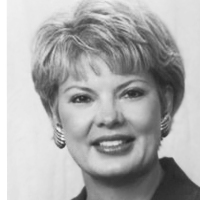Question
What are the basic principles of articulation and language therapy in VCFS?
Answer
Articulation therapy must be directed at the elimination of the maladaptive errors affecting place of articulation. If a child is developing a glottal speech pattern, therapy and parent training for a home program should begin immediately, even before the 2nd birthday. The mechanics of production of the sound should be introduced with sounds in isolation or nonsense syllables. After that is mastered, sounds in words may be introduced. Therapy must be intensive and frequent, with daily home practice for short periods, such as 2 or 3 minutes, several times a day. Parent training is essential. Therapy must be organized and scaffolded so that the child is led from accurate production of sounds in isolation to syllables, words, phrases, sentences, and then conversation. Therapy levels should be changed only when the child has mastered the previous level. Goals to address deficits in expressive language for young children should be overlaid or selected to be built around the sound-production goals. For example, vocabulary should be expanded based on the target sounds being produced so that the words are produced correctly and with good intelligibility. It makes no sense to work on increasing MLU if each word is unintelligible, plus doing so results in reinforcing inaccurate production of sounds in some contexts while working to correct those sounds in others. If phonemes /d/ and /s, z/ are not in the child’s repertoire yet, it is illogical to work on production of regular past tense verbs, or on production of plurals. If the child is producing a nasal fricative for /s/, or an /s/ on inhalation, and there is a focus on doing that sound to mark plurals, aberrant sound production will be reinforced and that much more difficult to extinguish when /s/ is a target sound for articulation therapy. When more sounds are produced correctly at the sentence level, production of those sounds in sentences should then be overlaid on the language therapy. That is, during “language” tasks, articulation therapy should remain front and center so the child is expected to use correctly produced sounds during language tasks. Development of abstract language skills, such as making inferences and understanding non-literal language, must be monitored carefully because it is an area of high risk in VCFS. Goals to address these areas should be added to the treatment plan as needed and approached with direct instruction.
Articulation therapy must be individual, intensive, and direct to be effective. Children with VCFS do much better with direct teaching than discovery methods. It is critical to follow a logical sequence from production of sounds in isolation or syllables to words, phrases, sentences, etc. It is also helpful to begin therapy with nasal, no-pressure and low-pressure sounds and then using those sounds as facilitating phonemes for production of high-pressure consonants. The SLP should be direct in telling and showing the child how to produce the sound (articulator placement) and also about how to direct the air flow. For example, SLPs often say “Bite your lip” when teaching /f/. However, it is more accurate and useful to say “Put your teeth on top of your lip and make windy teeth, “or “Put your teeth on your lip and push the air out the middle.” Rather than putting the entire lip inside the anterior maxillary dentition, this elicits accurate placement with some vermillion on the lower lip remaining exposed and making sure there is airflow between the anterior dentition and the lip. Labiodental placement is not sufficient. This one example applies to all speech sounds. Accurate placement and airflow (with nasal occlusion as needed during therapy and home practice) is the goal, not just intelligibility.
Another principle relates to choice of target words for practice. Words should contain sounds that are correctly produced plus the target sound. The entire word is then correct when produced and the inadvertent reinforcement of error sounds is avoided ensuring that the child will establish a core vocabulary of words that are accurate when produced. Because of the nature of errors and need for an intensive drill-type approach (often with nasal occlusion), articulation therapy must be individual, not in groups. The need for direct instruction and frequent repetitions to facilitate learning new skills applies to language therapy, as well. These principles apply to children with VCFS who have maladaptive compensatory articulation disorders and also to those who have phonological or developmental errors, which may also occur or co-occur.
Please refer to the SpeechPathology.com course, 20Q: Evaluation and Treatment of Speech/Resonance Disorders and Velopharyngeal Dysfunction, for more in-depth information on recognizing resonance disorders and the characteristics of velopharyngeal dysfunction, and providing appropriate management.

